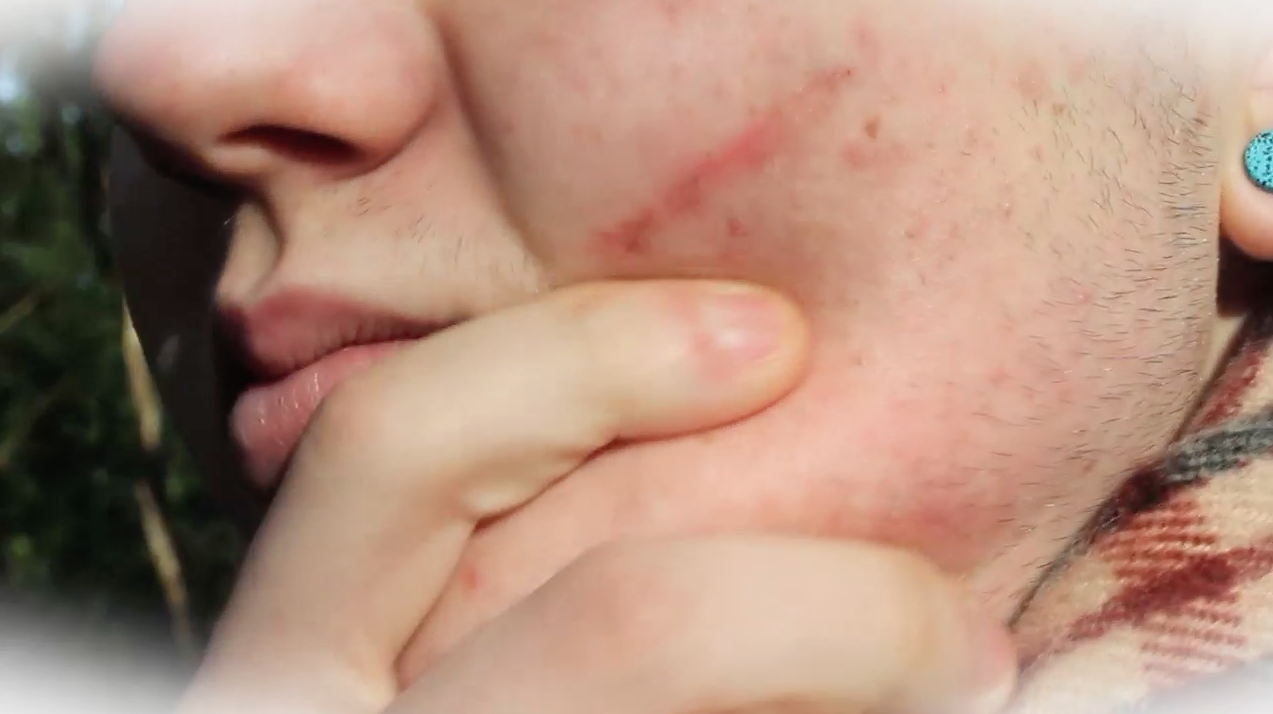What I learned about technologies from the development of our Thriller opening
Camera work
For me, I found that throughout our film project using the camera effectively was the hardest job. However, we will start with what we did well:
- White balance- Never once did we forget the importance of the White balance, resulting in a perfectly colour film straight onto the camera.
- Focus and Depth of field- From playing around with Depth of Field I believe we have learn a lot; how when something is out of focus it distorts our vision upon them; and how focus can be perceived to be a mental state. With thrillers, if something is blurred out but another is clear you will obviously pay more attention to the clear item- and if you want a shock factor, a quick focus pull will achieve your shock factor.

The depth of field shows the Assailant being clear, and Geoff being blurred - Framing- From the work we've done we have used framing effectively; giving each shot the perfect balance of subject and empty space. We have learnt that each shot requires careful planning on how the framing is used- and if it's broken then the scene won't look as good. However; the use of framing can be effective and metaphorical; in the below shot, we decided that the more space shown will show how empty Geoff feels at that point in time; a hollow being.
- Tripods- Nearly all of our shots made use of the very essential tool that is the tripod. Behind the scenes, you can clearly see us making use of one bar one scene. In the one scene that we didn't use one, it was for a tracking shot. Due to the hard and rough ground it would have been difficult using a dolly or other form of stable movement to get a good effect. Behind the scenes video here:
Overall, our camerwork will forever be improved by the lessons learnt through this project; we will always fill the frame with what we need, we will always set the white balance and we will most certainly attempt anything to keep the camera steady when on the move.
Editing
The editing of our film went spectacularly; we had very little problems if any at all. We learnt a lot from the use of Final Cut Pro, as well, including how to edit effects to fit perfectly into our plan for the title.
Overall, we have learnt a lot from the project, however with the few mistakes we did make we will adjust accordingly for the future. We will use all the good techniques that have been used again in the future. We will adapt with new techniques and the technologies used will improve as we do so.
- Continuity editing- Throughout our filming process we made sure that not a single thing broke continuity. We knew that it was important to never break continuity, else the film wouldn't make sense and would be a failure, so thankfully we didn't break it!
- 180 degree rule: When filming we looked carefully for the best spot to film the sequence in; and then we drew an imaginary line so we knew where not to cross. Where in the preliminary assignment we nearly broke the rule, we made careful plans so not to break it.
- Match on Action: We had two main match on actions in our sequence; the first being the placing of the rose and the second being the hand of Susan's attacking the Assailant; both proved to be effective at getting their point across. We learnt, here, how important it is to convey actions through this continuity editing.
- Duration of shots- A few shots we took were rather long, however we knew they had to be short and punchy, to make the film fast paced and tense. We edited down several shots to shave time off, which was needed in the end.
- Pace- In one of our shots, our lead female protagonist (Susan) was running away from the assailant. However, this shot was far too long- so, in order to speed it up, we edited the pace. The edited version is unnoticeable changed, and is much more seamless throughout the sequence.

Did you notice the altered pace?
- Titling- We learnt that the titles were of great importance to the film. So, to make the film look better we each devoted our time to making the title look as good as possible; the result proved that it was time well spent. We learnt how to alter the given effects to make the title go backwards, and how to make a good fog effect to add a more threatening vibe.
- Sound- Throughout this task we were recording sound separately; whether that was diegetic voices, ambient sound or Foley sound- each sound was asynchronous to the film. We did this because we knew that any sound recorded on the camera may be fuzzy and unclear; and we will continue doing this in the future. This proved to be a very effective way to record sound; and with multiple takes you don't have to restart your filming.
Blogging
From this assignment I have learnt that blogging is a vital part of getting audience feedback and a way to convey your own thoughts. I have learnt that walls of text aren't always good, however they are sometimes necessary to get your point across.



This is a good start, but this also needs much more detail for a level 4. When you discuss editing for example, this would be better if the continuity section is broken down to the actual techniques used, and how you improved. Did you use any other post p techniques? Look at the list of technologies you need to discuss in the advice - sound, titling, blogging - all relevant here.
ReplyDelete